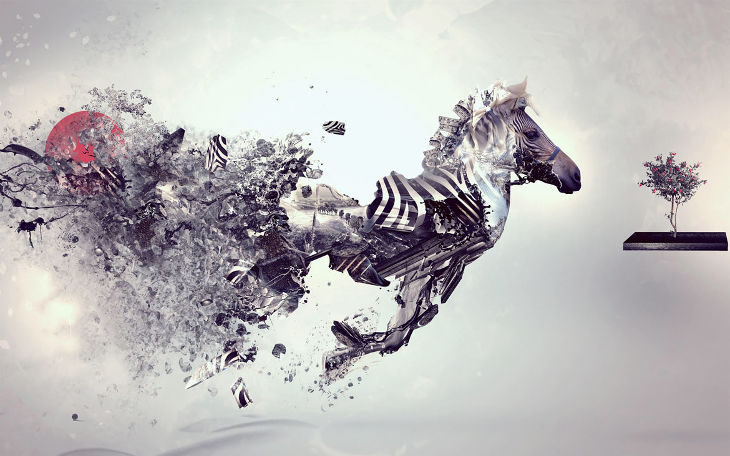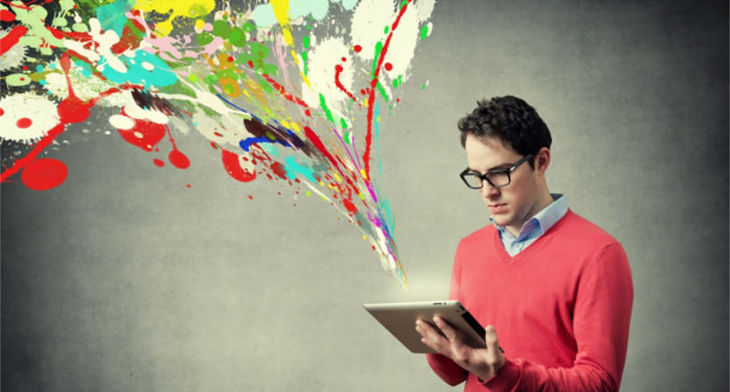If 2015 was not a satisfying year in design, forget it. If it was, then maybe 2016 can give you a better designing experience if you follow the visual trends outlined here. We asked some of the leading design professionals where graphic designing was headed in the coming year and we were not disappointed. Their responses comprise a colorful kaleidoscope of visual elements for various media and across disciplines.
Motion Graphics
Animation has always played a vital role in visual storytelling and 2016 will see the emergence of myriad techniques to make it less time consuming and more attractive. The new year will see a mix of 3D and 2D motion graphics that aim for a more stylized look. The right balance is struck when combining 3D modeling and 2D motion elements can create a depth and flatness, which provide a unique aesthetic dimension and a warm, earthy familiarity that will enhance audience appeal.

Animation in websites is set to dramatically increase in 2016 as designers bid adieu to Flash and welcome the newer workflows and tools, which facilitate better working with HTML 5 and JS motion graphics. Loading screen and introduction animation will remain a significant feature of design, but we’ll more websites where animation is used to maximize visual sophistication that enhances the user interface. Web design teams will increasingly look to create motion graphics as an integral part of their UIs.
Static logos are also going out of style. The digital explosion is influencing more and more brand managers to consider logos, which can lend themselves to effective animation in the forms of icons or emoticons and now emojis. With the emergence of a huge social media platform, most social and political issues seek to provide visual information with animated documentaries. The success of such works by Vox, TED Ed and StoryCorps are going to inspire more use of motion graphics in mainstream documentaries.
Business Designs
Design is becoming an integral part of business marketing. Design students are taught to provide the creative dimension to branding. They are not taught how to integrate creative elements into business strategy. Now, however, businesses are increasingly demanding design, which helps them meet marketing objectives. Companies are increasingly linking design efficiency with brand performance and ROI.

On the other hand even the business students, though adept at communication strategies, marketing techniques and analytical thinking are not taught how to integrate design elements into business objectives. Hence, to remain relevance in the business design
arena, graphic artists will need to learn the language of business and marketing. They will need to know how the designs they create will affect brand performance apart from brand appeal and visibility. And companies are now eager to integrate design into business strategy right from the beginning instead of subordinating creativity to mere execution.
Interactivity
As the digital design toolkit keeps expanding, it provides more and more flexibility to communicate through various dimensions. Designers are no longer focusing on color and typeface; rather how well they can complement voice, shape, motion, sound and attitude. Interactivity can provide a vital differentiation in storytelling and user experiences. The majority of people largely use the web on their mobiles and hence interactive designs need to be optimized for the small screen.

One area to look out for is UX design, which has gained maturity over the years. Companies have come to expect much better user experiences with brand interactions. While interactivity could once be enhanced just with a cosmetic application of EX design, the next generation of brands must integrate UX into their design dynamics from scratch. Hence, designers need to move beyond old UX paradigms and be willing to incorporate UX design into their creative process, which may prove challenging at first.
But in 2016, brand values and behavior will be under increased scrutiny for the bottom-line they add to society. People are becoming increasingly aware of the subliminal ways that interfaces, brand experiences and design expressions manipulate personal and social behaviors.
Related Posts
29+ Bright Backgrounds, Wallpapers, Images ...
Web Design Concepts That Will Blow Your Mind Graphic Design ...
25+ Flower Logo Designs, Ideas, Examples ...
Interview with Steven Dwyer - Premium PSD, Vector ...
Business Logo Designs
Top 10 Artistic Flyer Designs - Premium PSD ...
18+ Cupcake Cliparts - Vector EPS, JPG, PNG ...
18+ Geometric Shapes - PSD, PNG, Vector EPS ...
10 Creative Poster Designs - Premium PSD, Vector ...
41+ Flat Logo Designs - Premium PSD, Vector ...
70+ White Backgrounds, Wallpapers, Images, Pictures Design ...
125+ Plain Backgrounds, Wallpapers, Images, Pictures Design ...
20+ Company Logos - Printable PSD, AI, Vector EPS Design ...
Animal Skin Patterns - PSD, PNG, Vector EPS Format Download ...
18+ Doodle Patterns - PSD, PNG, Vector EPS Format Download ...
